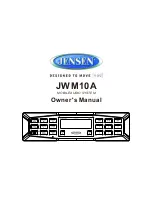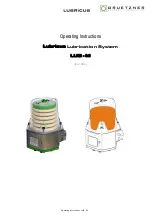
5. Installing and Wiring Components
l
Within the radio, a 3 amp rated Schottky diode is connected from each Digital Output to the
radio power supply terminal for clamping a solenoid fly back current.
l
If the relay supply voltage exceeds the radio supply voltage, then current would flow
through that diode back to the radio, preventing coil current from shutting off and
potentially causing an over-voltage condition.
l
A Digital Output on the I/O Slave that is outputting an I/O Master’s Digital Input takes the
state set in the
Digital Out 1 Default
and
Digital Out 2 Default
parameters in
Tool Suite
if communication to the I/O Master is lost and the
Default Delay
expires.
l
For more information about the default settings, see
Digital Output 1 Default and Digital
.
This diagram illustrates the typical Digital Output wiring between a solenoid and the I/O Slave:
Figure 12: Example: Digital Output Wiring
5.2.4 Wiring I/O Slaves to 4-20 mA Sensors
A common measurement interface for sensing equipment is a 4-20 mA current output.
l
The current amplitude correlates to a specific measurement (pressure, temperature, flow
rate, etc.).
l
Limitations of the FGRIO-M force the output of the signal to be a 1-5 V analog voltage.
l
The information in this section provides details for wiring the I/O Slaves Analog Inputs to 4-
20 mA sensors, including details about installing external resistors required to convert the
signal to 1 to 5 V.
Connecting a 4-20 mA Sensor to Analog Input 1 or Analog Input 2
This procedure is used when connecting a 4-20 mA sensor to Analog Input 1 or Analog Input 2 on
an I/O Slave.
Important!
: A resistor (249 Ω or 250 Ω) is required to convert 4-20 mA from the sensor to 1-5 V.
Page 78 of 131
LUM0008AG Rev Sep-2015
This document is the property of FreeWave Technologies, Inc. and contains proprietary information owned by
FreeWave®. This document cannot be reproduced in whole or in part by any means without written permission from
FreeWave Technologies, Inc.
Содержание FGR2-IO-IOE
Страница 131: ......
















































